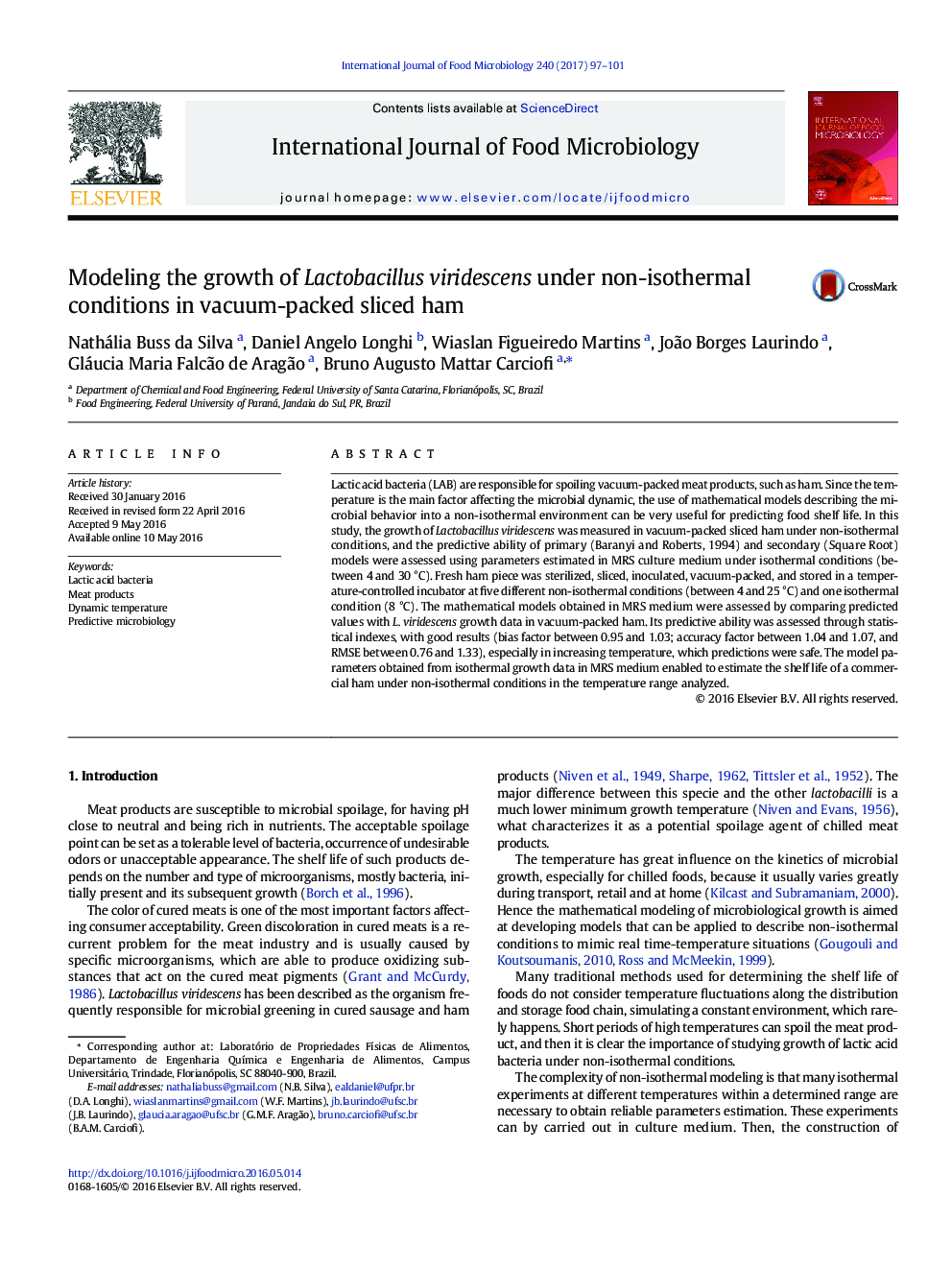| Article ID | Journal | Published Year | Pages | File Type |
|---|---|---|---|---|
| 5740898 | International Journal of Food Microbiology | 2017 | 5 Pages |
Lactic acid bacteria (LAB) are responsible for spoiling vacuum-packed meat products, such as ham. Since the temperature is the main factor affecting the microbial dynamic, the use of mathematical models describing the microbial behavior into a non-isothermal environment can be very useful for predicting food shelf life. In this study, the growth of Lactobacillus viridescens was measured in vacuum-packed sliced ham under non-isothermal conditions, and the predictive ability of primary (Baranyi and Roberts, 1994) and secondary (Square Root) models were assessed using parameters estimated in MRS culture medium under isothermal conditions (between 4 and 30 °C). Fresh ham piece was sterilized, sliced, inoculated, vacuum-packed, and stored in a temperature-controlled incubator at five different non-isothermal conditions (between 4 and 25 °C) and one isothermal condition (8 °C). The mathematical models obtained in MRS medium were assessed by comparing predicted values with L. viridescens growth data in vacuum-packed ham. Its predictive ability was assessed through statistical indexes, with good results (bias factor between 0.95 and 1.03; accuracy factor between 1.04 and 1.07, and RMSE between 0.76 and 1.33), especially in increasing temperature, which predictions were safe. The model parameters obtained from isothermal growth data in MRS medium enabled to estimate the shelf life of a commercial ham under non-isothermal conditions in the temperature range analyzed.
